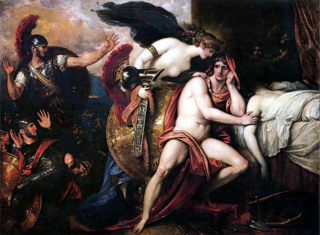Behaviorism
It's Not "Just a Myth"
Introduction to the Functions and Purposes of Myth
Posted May 3, 2017

We are familiar with the idea of myth as a falsehood or something that isn’t true and lacks a basis in fact. For example, we are constantly confronted with clickbait such as “ten myths about happy people.” Once we click on the link we might see one of the myths say something like “happy people are never sad.” While that is a common use of myth, it’s neither a particular accurate nor useful definition. The word myth comes from mythos, which means “story.” However, “story” doesn’t necessarily mean made up or fictitious. Your biography is a story, your family history is a story (albeit one that maybe not all members will agree upon), and your medical records are a story. All of these things are narratives of you, though what exactly they mean and add up to remains open to consideration. Thus, it its proper, fullest, and most useful application, a myth is a story or a narrative. A particular myth may or may not be true in the sense that the people, places, and events are all real and accurately depicted. But it is true in that it reveals a truth about humans.
Myth has been around as long as people have wondered about things, which is to say that myth has been around as long as people have been around. For example, cave painting (parietal art) stretches back 40,000 years. Examples of this cave art abound in France and Spain. No one is quite sure what the purpose of it was. Possibly it was decorative or ornamental but more likely, especially since many of the painting are in hard to access portions of the caves, the drawings served some religious or ceremonial use, in other words, a mythical purpose, in relation to fertility or hunting. Another prehistoric example is Stonehenge. No one know exactly why Stonehenge was created, but no one exerts the effort required to move tons and tons of stone hundreds of miles just to kill time or because the arrangement is pleasing to the eye. Whether it was for a ritualistic purpose such as healing, a destination for a pilgrimage, or something else, most of the theories point to a mythic usage.
Classical myth, the mythic realm of the Greeks and Romans, is one of the most well-known collections of myths available to us. With it pantheon of gods and goddesses, there are numerous stories of creation, war, love, and betrayal. Some psychological conditions even derive their diagnosis and name from the myths such as narcissism, a condition of preoccupation with one’s own self and desires that is derived from the arrogant youth Narcissus who fell in love with his own image. Even the word psychology comes from classical mythology. Psyche means “soul” or “breath of life” (ology refer to an area of study). So while we think of psychology as the study of the mind, in a larger, mythic meaning, psychology means the study of what make us human, the study of the deepest cores of our selves. In fact, myths centering on human behavior, such as preferred learning styles, environmental effects, causes of violence, and chemical imbalances have fueled the study of psychology and turned it from a pseudoscience – referred to as “folk psychology” – to one that is based on the scientific method. Through vigorous academic research, psychologists often find that there is some truth to behavior-based myths; however, there are also many limitations to them as well. For example, the theory that mental disorders are caused by chemical imbalances in the brain is true for some disorders, but not for all.
Psychologists examine myths and stories from history in order to better understand not only our past, but our future behavior. In the Middle Ages, for example, many myths centered around King Arthur. While there is no historical record of a King Arthur, there was probably someone like him who helped unite the people of Britain and his story was later exaggerated and added onto through retellings—somewhat like the telephone game—until it became the set of myths that we have now—not a lie, perhaps, but an enhanced narrative. We can use the stories of King Arthur in psychology to examine human bravery and sacrifice in the past and determine how they might be perceived differently in the future.
Our current historical moment has its own collection of myths. Some of them like Star Wars we can trace to earlier myths. Luke Skywalker has plenty of connections to Arthur, just as we can locate Emperor Palpatine as a horrific hybrid of Zeus, the all-powerful controller of the thunderbolt, and Hades, Greek god of the dead. The myths from all ages are connected to one another, but more importantly they are connected to us..
This is one reason why many of the world’s great thinkers and psychologists find use in myth. For example, Sigmund Freud drew from the story of Oedipus, the namesake for Freud’s Oedipus complex that attempts to explain aspects of psychosexual development and attachment. In turn, Carl Jung formed his corresponding Electra complex. Jung also developed his theory of archetypes or recurring patterns that appear throughout time including the hero, the trickster, the mother, the father, and so forth. In contrast, B.F. Skinner, often referred to as The Information Philosopher, argued against the concept of fate and free will as depicted in Greek mythology. Skinner theorizes that our fate is not the will of the gods nor do the gods choose the path for us as described in Homer’s Odyssey. Homer wrote that the gods are responsible for controlling aspects of our path, but we still have to choose to go down the path. Skinner denies the existence of divine intervention and even goes so far as to deny human intentions and free will thanks to operant conditioning techniques. These universal myths pervade our individual lives.
There are public and private myths. Public myths are stories shared by a group that are part of the group’s identity. Private myths are one’s own myths or perhaps those of one’s family or friends. Myths are stories of origin, explaining how things came to be and why they are as they are. Myths navigate social issues, morality, and ethics. Myths are sacred histories. Dreams are a private mythology. Television, movies, plays, comics books and graphic novels, and, of course, our own personal experiences create myths. We can pluck these ancient gods and goddesses from their lofty realms and contextualize them within the here and now of everyday life. Myths guide and carry us through the various stages of our lives and help us to understand the outer world and the inner self. The ultimate value of the myths is what they can tell us about us, how they can help us with our own lives.


